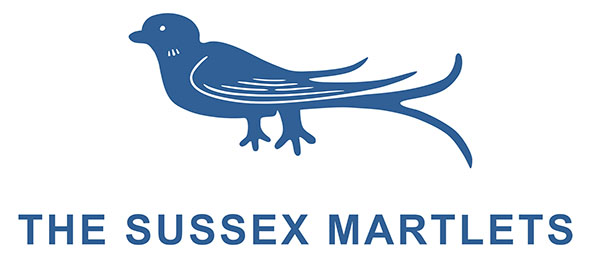Written by Peter Hartland
Our Club was formed in 1905 during the heyday of amateur cricket. There was no difficulty in raising teams or finding good fixtures. Many of the early playing members had featured, or would feature, in the first-class game. The county ground at Hove was a frequent venue, and other games were staged at The Saffrons, Horsham, Sheffield Park and Arundel Castle. All this came to an abrupt end when war was declared in August 1914.
Gerry Campbell joined the Club the year before, aged 29, making an early mark by taking seven wickets at Lancing College. He had made one appearance for Surrey the previous summer, scoring one run and bowling six wicket-less overs in a rain affected match against Leicestershire at The Oval.
Back in 1902 Campbell had opened the bowling for Eton, and four years later took part in a first-class game between Europeans and Hindus in Bombay. It seems he bowled tidily enough, delivering nineteen overs in the match for sixty runs, but again there were no wickets. Bertie Chaplin, another future Martlet of note, was playing as well. The link between India and Sussex cricket was forged by Ranjitsinhji and other Martlets subsequently played there.
Post War Revival
The organisation of the Club in the early days was largely undertaken by secretary Hugh Collis. Like many he did not survive the war. When cricket resumed in England in the spring of 1919, the Club effectively no longer existed. That might have remained the case but for a chance meeting at Lord’s in July between Gerry Campbell and Geoffrey Bolton, who had played a few games in 1914. At some stage the conversation turned to the Martlets. Always a man of action (he had risen to the rank of captain during the war), Campbell’s parting words were something along the lines of “Leave it with me”. Within a few days he had arranged a fixture against Lancing College and assembled eleven players. The match took place the following week. It was followed by several more.
For the next few years Campbell and another sound organiser, H Asa Thomas, arranged and ran every game between them. The Club was back on its feet again. It grew rapidly stronger, laying a firm foundation for the successful 1930s.
Leading Bowler
Success on the field was due in no small measure to Gerry Campbell himself. During eight seasons alone between 1924 and 1931 he took no fewer than 608 wickets, passing the hundred mark twice. This was all after his fortieth birthday. He got through a lot of overs, once delivering 40.5 in an innings against Hampstead at Hove to claim 4 for 145. But he also ran through a lot of good teams. TG (Tray) Grinter, of Stoics and Wanstead, was perhaps the greatest of all club batsmen, with more than 200 centuries to his name. Only once was he ever clean bowled first ball, and that was by Campbell at Hove on 18 June 1924. By the end of that month the Martlets had won every game except for one draw, and were described by The Cricketer as “one of the strongest clubs on the South coast.” Several pre-war luminaries had now returned to the committee.
A big man, Gerry Campbell was not a very good fielder. He often batted in the lower order, sometimes at number eleven. Looking back through those old records, his batting seems to have been seriously underrated. He hit 103 against Cuckfield in 1924, was leading runscorer in 1913, 1927 and 1928, and on retirement in 1939 aged 55 had actually scored more runs for the Club than anyone else to date.
With well over eight hundred wickets to his name, Campbell will always be one of Sussex Martlets’ most successful bowlers. He does however leave a more important legacy. But for that chance meeting at Lord’s over a hundred years ago, and the swift, decisive action of Captain Gerry Campbell, the Sussex Martlets Cricket Club would probably have been lost and long-forgotten.
